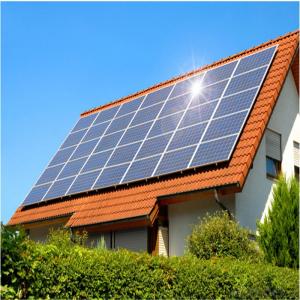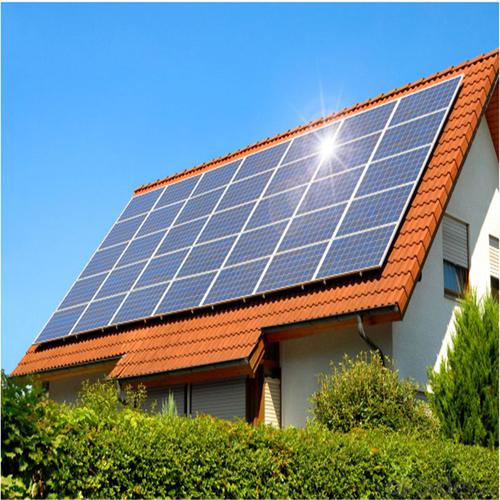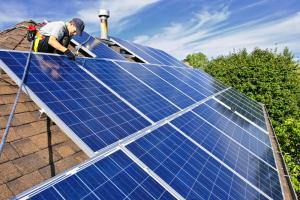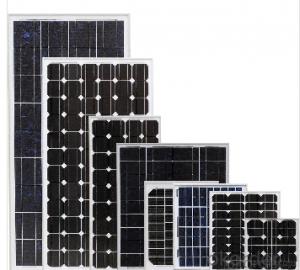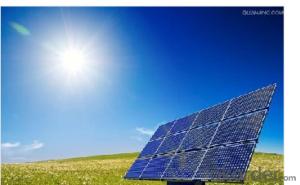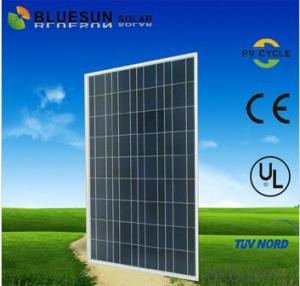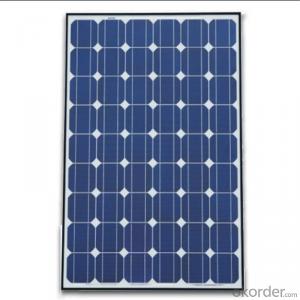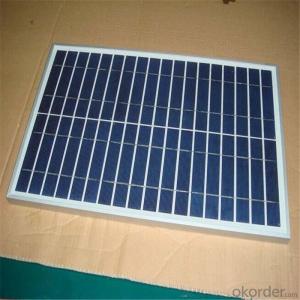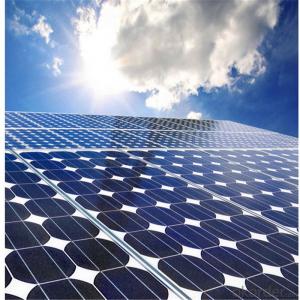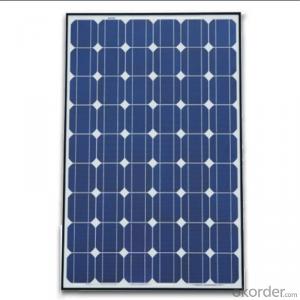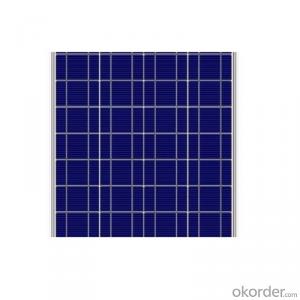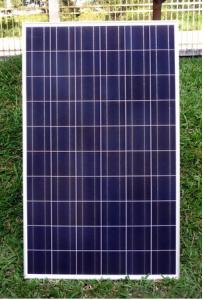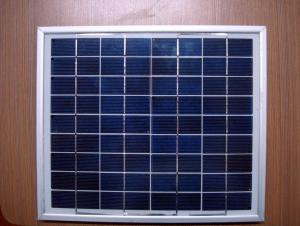Sky Solar Panels 220w 60 Cell Solar Photovoltaic Module
- Loading Port:
- China main port
- Payment Terms:
- TT OR LC
- Min Order Qty:
- 1000 watt
- Supply Capability:
- 500000 watt/month
OKorder Service Pledge
OKorder Financial Service
You Might Also Like
Specification
Instruction
1) Product name: solar panel / module
2) Solar cell: Mono-crystalline / Poly-crystalline / Amorphous
3) Tempered glass laminated with aluminum frame
4) Life time: 20 - 25 years
5) Temperature co-efficiency: A=+1,46mA B=-79mV, Rp/p=-0.43
6) Power specification at 1kW/m 2, AM 1, 5
7) Output cable: multi contact connectors
8) Construction:
a) Front: High-transmission 32mm tempered glass
b) Back: TPT
c) Encapsulant: EVA
9) Frame: aluminum
10) Certification: CE, TUV
Feature
1. Nominal 18V DC for standard output.
2. Cable connectors for easy installation.
3. Outstanding low-light performance.
4. Splendid aesthetic appearance and easy installation.
5. High efficiency & high stability.
6.Advanced EVA encapsulation system with TPT back sheet to improve product modules
7. Design to meet unique demand of customer.
8.25 year module output warranty.
9. Rugged design to withstands high wind pressure and snow load, easy installation.
10. Designed to comply with rigorous operating conditions, including test.
Images
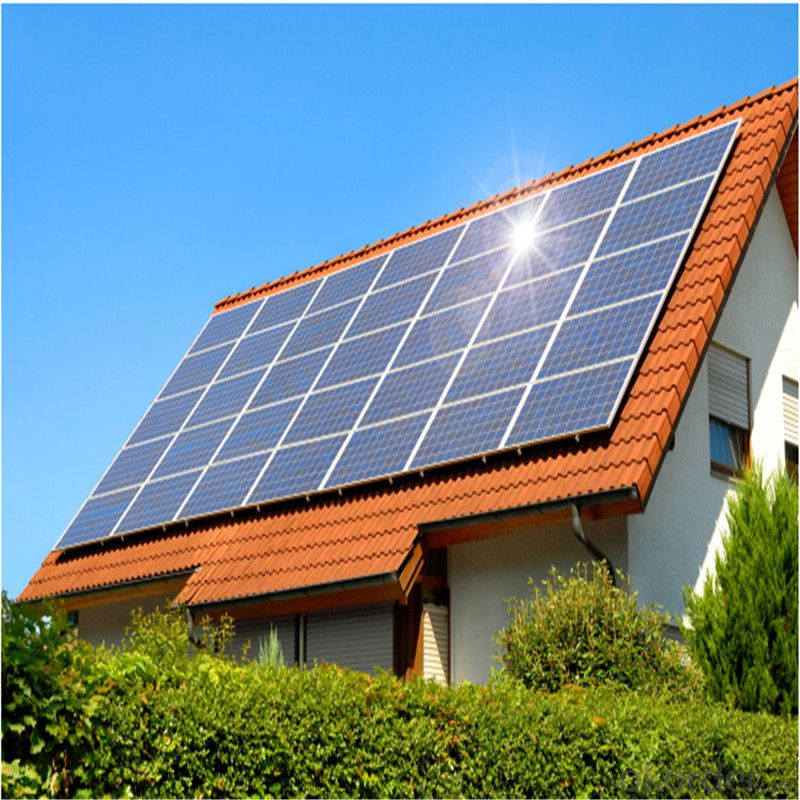
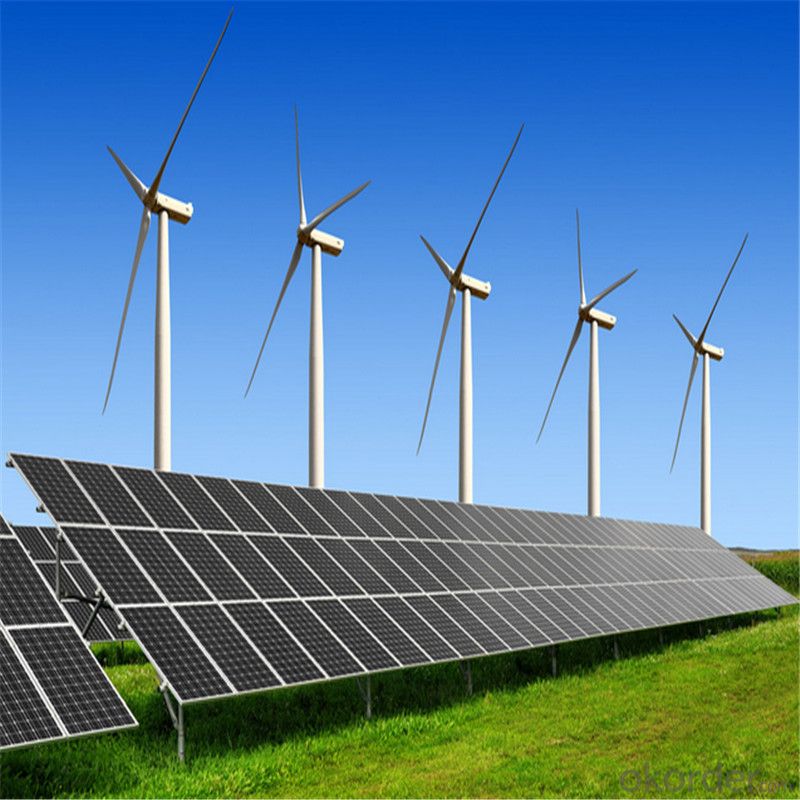
Specification
Dimension (mm) | 1640*992*40 |
NO of Cells and Connections | 60(6x10) |
Weight(kg) | 18.5 |
Tolerance | 0~+5% |
Cell | Polycrystalline Cell 156 x 156 mm |
Operating Temperature | –40 °C to +85°C |
Max System Voltage(VDC) | 1000 |
Packing | 312PCS/20ft(H) Container |
FAQ
We have organized several common questions for our clients,may help you sincerely:
1). What’s price per watt?
A: It’s depends on the quantity, delivery date and payment terms of the order. We can talk further about the detail price issue. Our products is high quality with lower price level.
2). Can you tell me the parameter of your solar panels?
We have different series of cells with different power output, both from c-si to a-si. Please take our specification sheet for your reference.
3). How do you pack your products?
We have rich experience on how to pack the panels to make sure the safety on shipment when it arrives at the destination.
4). How long can we receive the product after purchase?
In the purchase of product within three working days, We will arrange the factory delivery as soon as possible. The perfect time of receiving is related to the state and position of customers. Commonly 7 to 10 working days can be served.
- Q: Are there any tax credits available for solar panel installation?
- Yes, there are tax credits available for solar panel installation. The federal government offers a solar investment tax credit (ITC) that allows homeowners and businesses to deduct a percentage of the cost of their solar panel system from their federal taxes.
- Q: Can solar panels be installed on swimming pools?
- Yes, solar panels can be installed on swimming pools to harness the sun's energy and heat the water. These panels, often called solar pool heaters, are specifically designed to capture solar energy and transfer it to the pool water, providing an energy-efficient and cost-effective way to maintain a comfortable swimming temperature.
- Q: Can solar panels be installed in areas with high winds?
- Yes, solar panels can be installed in areas with high winds. However, it is crucial to consider the design, installation, and maintenance of the solar panel system to ensure its durability and stability in such conditions. Reinforcements and proper anchoring techniques can be employed to withstand the wind load and prevent any damage to the panels.
- Q: 260 watt solar panels on an rv?
- It depends on the power you need. There should be a controller between the battery and the solar pv panels.
- Q: Can solar panels be installed on water bodies or reservoirs?
- Yes, solar panels can be installed on water bodies or reservoirs. This is known as floating solar or floating photovoltaic (FPV) technology. It involves mounting solar panels on buoyant platforms on the surface of the water. This approach offers several benefits, including reduced land requirements, increased energy generation due to the cooling effect of water, and reduced evaporation from the water body.
- Q: Can solar panels be installed on a warehouse or distribution center?
- Yes, solar panels can be installed on a warehouse or distribution center. In fact, these large, flat rooftops are often ideal locations for solar panel installations due to the ample space available for positioning the panels. The electricity generated by the solar panels can be used to power the operations of the warehouse or distribution center, reducing reliance on traditional energy sources and decreasing carbon emissions.
- Q: I need to know what the main components of a solar water heater and how they functionThanks if you answer x
- Solar water heater consists of solar vacuum tube,water storage tank,supports and other accessories.solar vacuum tube is the key component of a solar water heatert,it absorbs sunlight and convert it to heat energy which heat water in the vacuum tube,hot water rises up,cold water fall down,such natural circution make water hot in the water tank.
- Q: Hoping to find instruction, materials list and hardware needed to construct solar panels myself, how many and make it happen instead of talking about it
- If you think that a solar storm is going to knock out most power utilities in that time, what makes you think that your solar panels will not be affected as well? The cost to even come close to light up half your house will be prohibitive and will take at least a decade or 2 to just break even on your original costs. May want to do a little more research on your 202 storms. If you are concerned about the power going out for a while, then you better check at what else may happen.
- Q: Can solar panels be used in areas with limited access to electricity?
- Yes, solar panels can be used in areas with limited access to electricity. Solar panels convert sunlight into electricity, making them a suitable and sustainable solution for generating power in remote locations or areas without a reliable electricity grid. They can provide clean and renewable energy, helping to meet the electricity needs of communities with limited access to traditional power sources.
- Q: Is this true in a dc system? What if my battery current is negative?
- complex task. browse in google and yahoo. that could help!
Send your message to us
Sky Solar Panels 220w 60 Cell Solar Photovoltaic Module
- Loading Port:
- China main port
- Payment Terms:
- TT OR LC
- Min Order Qty:
- 1000 watt
- Supply Capability:
- 500000 watt/month
OKorder Service Pledge
OKorder Financial Service
Similar products
Hot products
Hot Searches
Related keywords
